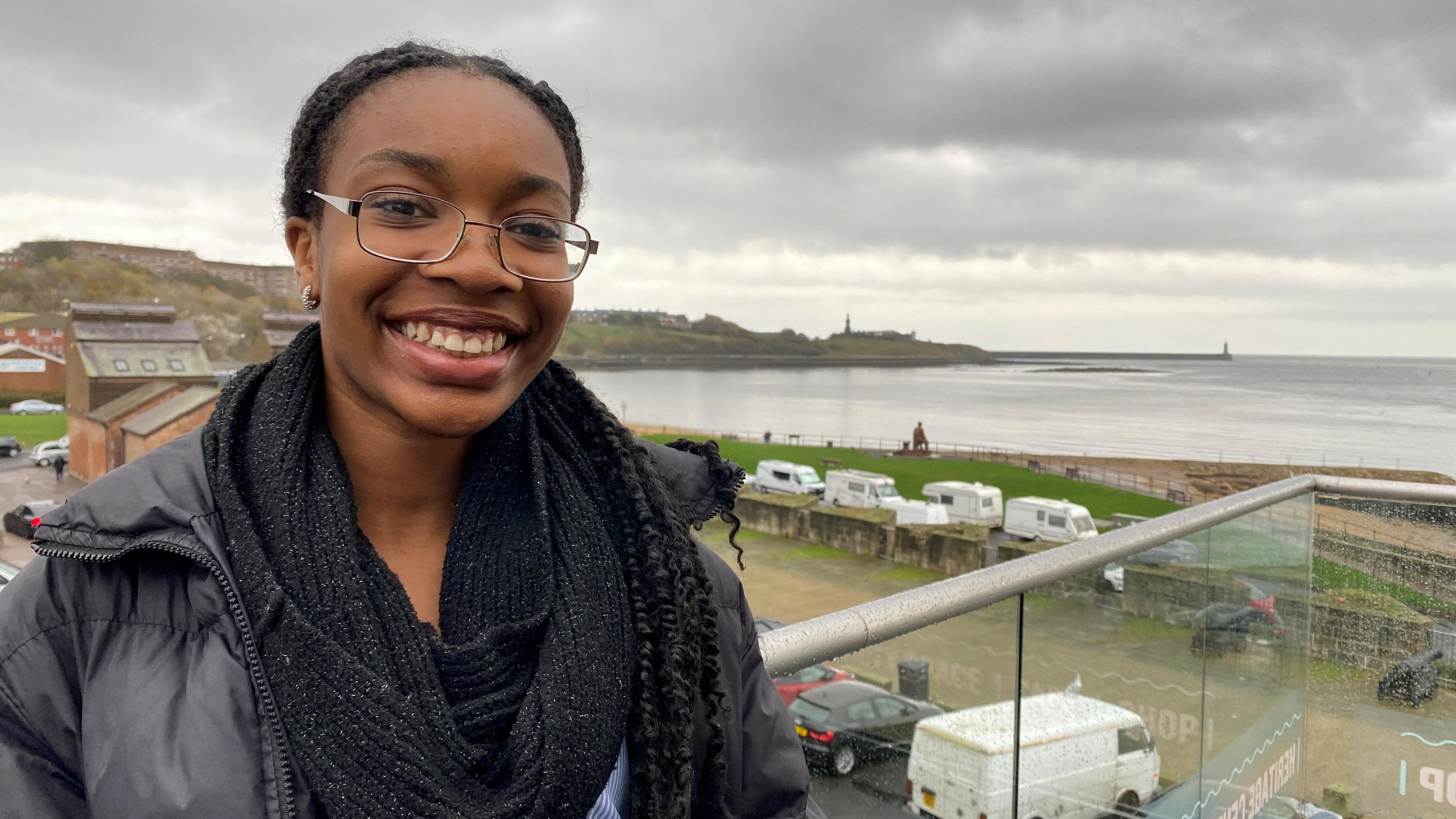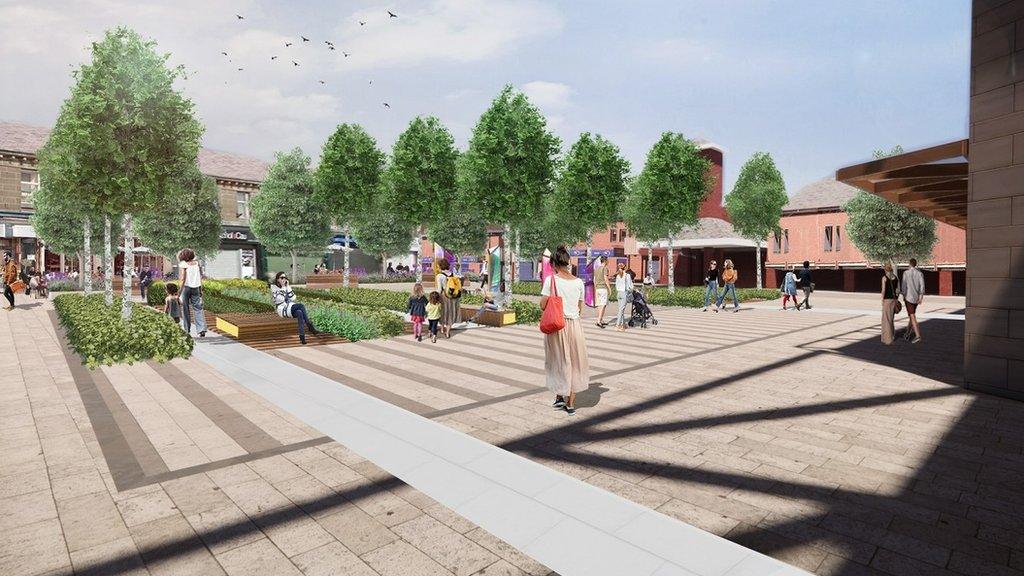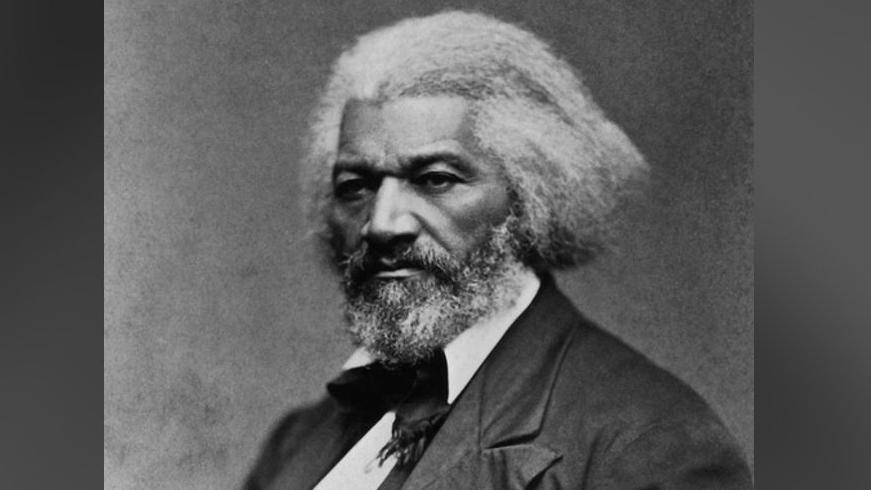Statue to 'remarkable' woman who escaped slavery

The statue of Mary Ann Macham was unveiled in North Shields
- Published
A statue to a "remarkable and brave" woman who fled slavery and torture in the US has been unveiled in the fishing town in northern England where she found freedom.
Mary Ann Macham spent weeks hiding in woods in Virginia before stowing away on a ship, eventually arriving in North Shields in the early 1830s.
She was taken in by a Quaker family, married a local man and remained in the town until she died aged 91.
The bronze figure, created by North Shields-based artist Keith Barrett, stands at the top of the Riverside Embankment Walkway, overlooking the sea close to where she once lived.

Mary Ann Macham found freedom in North Shields until her death at 91
Mary Ann gave an account of her escape which was written down by the Spence family who supported her when she arrived in North Shields.
She had been born in Middlesex County in May 1802, her father the son of an estate owner and her mother one of those enslaved by them.
Raised by an aunt, her death saw Mary Ann sold by a relative and sent, aged 12, to a farm with 200 other enslaved people.
For 17 years she was subject to regular whippings and torture, but took her chance one night, prising her way out of a locked room and hiding for weeks while slavers and dogs hunted her.

Steph Towns found a local history book in a charity shop with a mention of Mary Ann Macham and began to research her story
At the time there was a network of people who helped enslaved people and she was smuggled on to a boat bound for the Netherlands and, from there, to North Shields via Grimsby, Hull and York.
Her story was rediscovered by chance by teacher Steph Towns and her grandmother who were researching Britain's role in slavery.
"I saw a picture of Mary Ann and, well, that really led us down quite a bit of a trail."

Nina Brown was fascinated to learn about Mary Ann Macham
A post on social media about what they found was spotted by Nina Brown, a trustee at North Shields's Old Low Light Heritage Centre.
"The story was so amazing I just thought we've got to share this more widely," she said, adding, "she was just such a remarkable and brave woman".
It led to an exhibition at the centre, with Mary Ann Macham's story "very much at the heart of it", and the erection of a headstone on her unmarked grave in the town's Preston Cemetery.

Sculptor Keith Barratt said he was drawn to the project by reading a first hand account of Mary Ann Macham's life
In a further attempt to immortalise her, a statue inspired by her story was commissioned by North Tyneside Council.
Sculptor Keith Barratt wanted it to show that "she came from a place of great pain, but it's also a story of human liberation, of breaking the chains and I feel that this is something universal that many people will understand".

Keith Barratt used wood in early designs of the sculpture
It has won the support of a student from Newcastle who two years ago called on the government to include black British history in the national curriculum.
Deborah, then 15, had been shocked to learn there were previously black people in the UK because "we never ever talk about it".

Education campaigner Deborah believes Mary Ann Macham's story should be better known
She believes the statue will help educate people about "how far black history goes within the UK".
"The fact that it is in a public place where anyone can come and see it, and understand why Newcastle looks the way it does, why England looks the way it does, I think that's a step in the right direction," she said.
Follow BBC North East on X, external and Facebook, external and BBC Cumbria on X, external and Facebook, external and both on Nextdoor and Instagram, external.
Get in touch
Do you have a story suggestion for BBC Tyne?
Related stories
- Published7 August 2023

- Published5 October 2024
